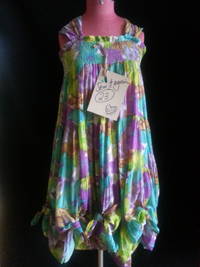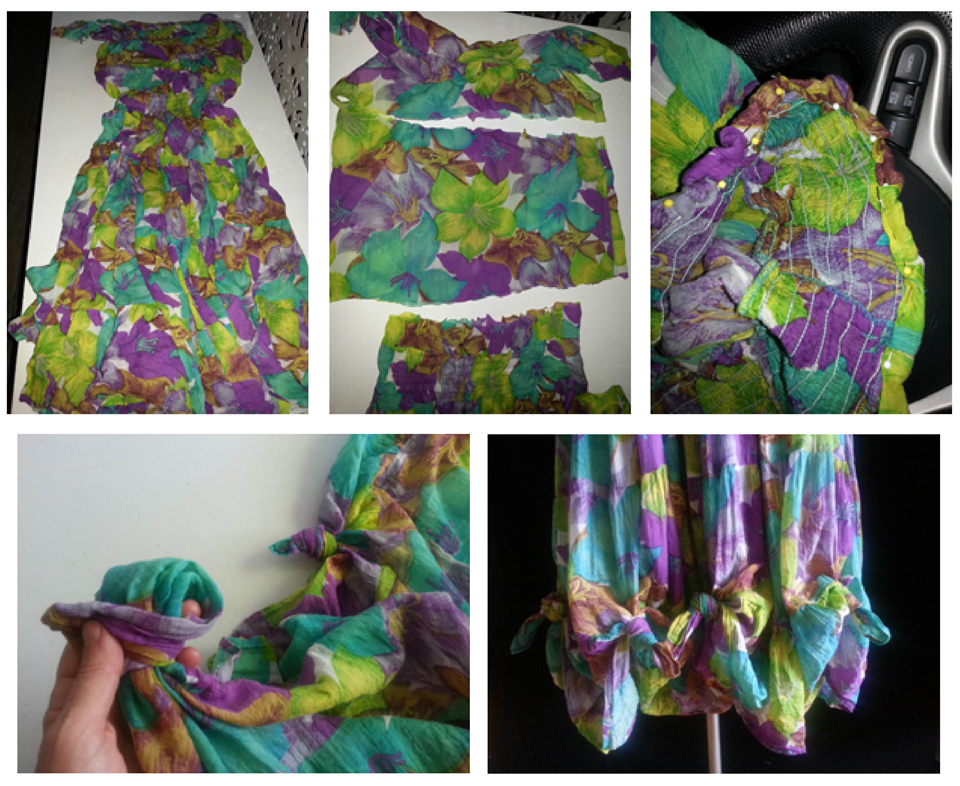 Upcycling can be achieved without a sewing machine as I did by turning this old cotton dress into a muumuu, hand-sewing shoulder straps and knotting the hemline to create interest.
Upcycling can be achieved without a sewing machine as I did by turning this old cotton dress into a muumuu, hand-sewing shoulder straps and knotting the hemline to create interest.
It is empowering to take any old garment and recreate it into something more wearable – and I’m fascinated to be reading and researching others doing this around the world, including the Centre for Sustainable Fashion in London.
By actions and choices, we as individuals can make changes to reduce the burgeoning rate of textile consumption which has been increasing three times faster than the population.
Much of this increased textile use is man-made fibres created using petroleum, coal and gas – which feeds into the whole consumption and disposal issues associated with fast-fashion trends.
NASA reported this week that high temperatures last year were part of a sustained long-term climate warming trend and in Australia, where I live, 2013 was the hottest on record.
“Carbon dioxide is a greenhouse gas that traps heat and plays a major role in controlling changes to Earth’s climate. It occurs naturally and also is emitted by the burning of fossil fuels for energy. Driven by increasing man-made emissions, the level of carbon dioxide in Earth’s atmosphere presently is higher than at any time in the last 800,000 years,” NASA said.
Back in 2007 in Brisbane, we changed our water consumption patterns because media stories and communication messages showed our dams drying up and level 6 water restrictions were enforced. People believed we were in a crisis and could run out of water.
The impact of our textile consumption is not necessarily as visible, but there is a growing global movement encouraging us to become more aware of where our clothes come from and the impact their production and disposal has on the environment.
My coming to consciousness about these issues sparked this 365-day campaign of my own making to demonstrate a different way of dressing by upcycling existing clothing.
Today’s offering was another $2 dress from an op shop, with pretty cotton fabric but a dated style. It had a shirred waist so I cut off the existing top and lifted the waist up to become the bodice, and hand-sewed on straps made from the off-cuts. To create a fresh hemline, I tied eight simple knots evenly spaced around the hemline. You could use more or less knots to change it again at any time.
